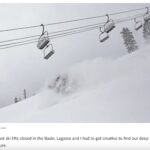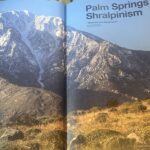*If you visit the Informed Experiences page you’ll see several examples of student work I have highlighted from our field work over the years in the Arctic Refuge. Kayala was once a student in my sustainability classes, graduated as valedictorian, and today continues to use her experience and voice to advocate for Arctic Refuge protection. This is a piece she wrote for CDN:
ARCTIC NATIONAL WILDLIFE REFUGE — Silver clouds speckle the denim blue sky as the sun peeks out from behind a mountain. Spotlights of orange hues hit the rigid peaks as a dusting of fog settles atop the lake.
I look at my watch: 2:34 a.m. The sun tracks the horizon line, but never falls below it. I stay up all night, riding the everlasting peak of sunset, enthralled by the land shimmering in the midnight sun.
I’m here in the heart of the Arctic Refuge along with eight other activists at the invitation of Robert Thompson, an Iñupiaq elder and ardent defender of this land, which is considered sacred to both the Gwich’in and Iñupiat peoples. Occupying the entire northeast corner of Alaska, the Refuge’s 19.6 million acres comprise one of the most biodiverse regions left on the planet. It is also home to rich deposits of oil and gas.
The decades-long debate around the Arctic Refuge has become a symbol for something beyond simply drilling for oil. It’s about climate change, preserving wildlife, honoring culture, acknowledging history, and the well-being of our collective future.
“We who live here are aware of the impacts [of climate change] on the land,” Thompson said. “People in the cities don’t realize some of the things happening here. I can’t emphasize enough how serious it is.”
On Sept. 6, the Biden administration took a major step toward permanently protecting the Arctic Refuge by canceling all remaining oil and gas leases issued under the previous administration. The cancellation of the leases only comes because of the work of people like Thompson.
I met Thompson three years ago over a cup of coffee in Fairbanks, Alaska. His wisdom, passion and humor struck me immediately. He believes that the more people who learn about the Arctic Refuge, or visit it themselves, the more people will join the fight to protect it.
Years in the making, my own expedition starts in Arctic Village, Alaska, where I hop in the front seat of the 1975 Cessna A185F seaplane named Elcy and feel a rush of nerves as the engine starts up. The plane’s third-generation pilot, Danielle Tirrell of Coyote Air, flies through the rugged and challenging environment with ease, as if her aircraft is merely an extension of her body.
We circumnavigate Mount Chamberlin, the third-tallest peak in the Brooks Range, my eyes transfixed on the contours of the 1,000-year-old glacier wilting over the peak’s edge. A creek flows from the toe of the glacier, traveling from the pale limestone, through the thick brush and down into Schrader and Peters lakes.
Read the rest here





